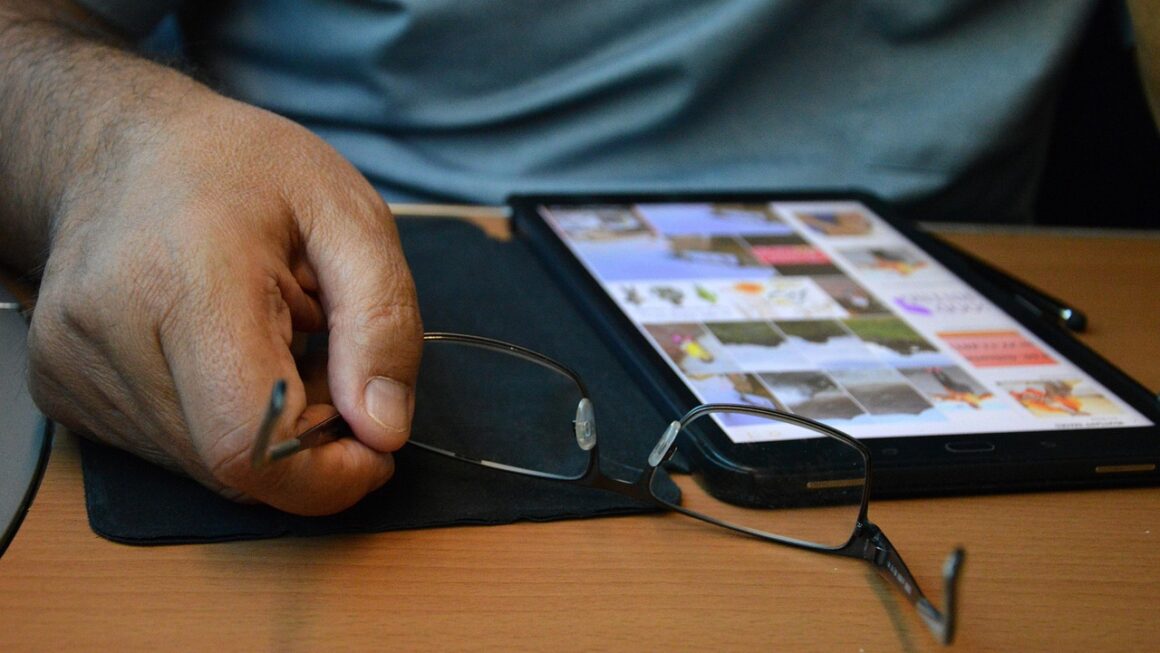Imagine a world where your coffee brews automatically when your alarm goes off, your lights dim as you settle in for a movie, and your thermostat adjusts to your preferred temperature before you even step inside. This isn’t a futuristic fantasy; it’s the reality of smart devices. These ingenious gadgets are revolutionizing the way we live, making our homes and lives more convenient, efficient, and connected than ever before. This blog post will delve into the world of smart devices, exploring their benefits, various types, security considerations, and future trends.
What are Smart Devices?
Defining Smart Devices
Smart devices are electronic devices that can connect to a network (typically Wi-Fi or Bluetooth) to exchange data and interact with users or other devices. They often incorporate sensors, software, and connectivity to perform tasks autonomously or with minimal user intervention. The core idea is to automate processes and provide remote control and monitoring capabilities.
Key Features of Smart Devices
Here are some features that define smart devices:
- Connectivity: The ability to connect to Wi-Fi, Bluetooth, or other networks is fundamental.
- Automation: Smart devices can automate tasks, such as turning lights on or off based on schedules or sensor input.
- Remote Control: Users can control smart devices from anywhere with an internet connection via smartphones, tablets, or computers.
- Data Collection: Many smart devices collect data, such as temperature, motion, or energy usage, which can be analyzed to optimize performance or provide insights.
- Integration: Smart devices can integrate with other devices and platforms to create a seamless ecosystem.
Examples of Common Smart Devices
The smart device market is vast and continues to grow. Some common examples include:
- Smart Speakers: Amazon Echo (Alexa), Google Home (Google Assistant), Apple HomePod (Siri).
- Smart Lighting: Philips Hue, LIFX.
- Smart Thermostats: Nest, Ecobee.
- Smart Security Systems: Ring, Arlo.
- Smart Appliances: Smart refrigerators, ovens, washing machines.
- Wearable Devices: Smartwatches (Apple Watch, Samsung Galaxy Watch), fitness trackers (Fitbit).
Benefits of Using Smart Devices
Enhanced Convenience and Automation
The primary benefit of smart devices is the increased convenience and automation they bring to daily life. Imagine being able to control your home’s temperature from your phone while you’re still at work, ensuring it’s perfectly comfortable when you arrive. Or having your lights automatically turn on at sunset, eliminating the need to fumble for switches in the dark.
- Example: Using a smart plug to schedule your coffee maker to brew automatically each morning.
- Actionable Takeaway: Identify repetitive tasks in your daily routine and explore how smart devices can automate them.
Improved Energy Efficiency
Many smart devices are designed to optimize energy consumption, helping you save money on your utility bills and reduce your carbon footprint. Smart thermostats, for example, learn your heating and cooling preferences and adjust the temperature accordingly, reducing energy waste when you’re away or asleep.
- Example: A smart thermostat automatically lowers the temperature when no one is home, saving on heating or cooling costs.
- Statistic: According to Nest, their thermostats save users an average of 10-12% on heating bills and 15% on cooling bills.
Increased Home Security
Smart security systems offer peace of mind by providing remote monitoring and alerts. Smart cameras allow you to see what’s happening at home in real-time, while smart locks let you control access to your property remotely. Motion sensors can detect unusual activity and trigger alarms, alerting you and the authorities if necessary.
- Example: A smart doorbell with a built-in camera allows you to see and speak to visitors from your smartphone, even when you’re not home.
- Actionable Takeaway: Research smart security systems that fit your budget and security needs.
Enhanced Accessibility and Support for People with Disabilities
Smart devices can significantly improve the quality of life for people with disabilities by providing voice control, remote assistance, and automated tasks. Voice assistants like Alexa and Google Assistant allow users to control various devices and services with simple voice commands, making it easier to manage their homes and daily routines.
- Example: A person with mobility limitations can use voice commands to turn on lights, adjust the thermostat, and control appliances.
Types of Smart Devices for Your Home
Smart Home Hubs and Assistants
Smart home hubs serve as central control points for your smart devices. They often feature voice assistants that allow you to control devices with voice commands. Some popular hubs include:
- Amazon Echo (Alexa): Integrates seamlessly with Amazon’s services and a wide range of smart devices.
- Google Home (Google Assistant): Offers powerful voice recognition and integration with Google’s ecosystem.
- Apple HomePod (Siri): Designed for Apple users, provides tight integration with Apple devices and services.
Smart Lighting and Outlets
Smart lighting allows you to control your lights remotely, adjust brightness, and create custom lighting scenes. Smart outlets can turn ordinary appliances into smart devices by allowing you to control them remotely.
- Smart Bulbs: Philips Hue, LIFX
- Smart Plugs: TP-Link Kasa Smart Plug, WeMo Mini Smart Plug
- Actionable Takeaway: Start by replacing a few standard light bulbs with smart bulbs and experimenting with different lighting scenes.
Smart Security Systems
Smart security systems offer comprehensive home protection with features like:
- Smart Cameras: Ring, Arlo, Nest Cam
- Smart Locks: August Smart Lock, Schlage Encode Smart WiFi Deadbolt
- Motion Sensors: Ring Alarm, SimpliSafe
Smart Appliances
Smart appliances are designed to make your life easier with features like remote monitoring, automated scheduling, and personalized recommendations.
- Smart Refrigerators: Samsung Family Hub, LG Smart Refrigerators
- Smart Ovens: GE Profile Smart Oven, Bosch Smart Ovens
- Smart Washing Machines: Samsung Smart Washer, LG Smart Washer
Security and Privacy Considerations
Potential Risks and Vulnerabilities
While smart devices offer numerous benefits, they also introduce potential security and privacy risks. These devices collect and transmit data, making them vulnerable to hacking and unauthorized access. Hackers could potentially gain access to your home network, personal information, or even control of your smart devices.
- Data Breaches: Sensitive data collected by smart devices could be exposed in a data breach.
- Hacking: Hackers could gain control of your smart devices and use them for malicious purposes, such as spying on you or launching attacks on other devices.
- Privacy Concerns: The data collected by smart devices can be used to track your activities and habits, raising privacy concerns.
Best Practices for Securing Your Smart Devices
To mitigate these risks, it’s crucial to take proactive steps to secure your smart devices:
- Use Strong Passwords: Use strong, unique passwords for all your smart devices and accounts.
- Enable Two-Factor Authentication: Enable two-factor authentication (2FA) whenever possible to add an extra layer of security.
- Keep Software Updated: Regularly update the firmware and software on your smart devices to patch security vulnerabilities.
- Secure Your Wi-Fi Network: Use a strong password for your Wi-Fi network and enable WPA3 encryption.
- Review Privacy Settings: Review the privacy settings on your smart devices and adjust them to your preferences.
- Be Careful What You Share: Be mindful of the information you share with your smart devices and services.
- Research Before You Buy: Research the security features of smart devices before you purchase them.
Choosing Secure Smart Devices
When selecting smart devices, prioritize those with robust security features and a proven track record of security. Look for devices that offer:
- Encryption: Encrypted data transmission to protect your information.
- Regular Security Updates: A commitment to providing regular security updates to address vulnerabilities.
- Privacy Policies: Clear and transparent privacy policies that explain how your data is collected and used.
Future Trends in Smart Devices
Artificial Intelligence (AI) and Machine Learning (ML) Integration
AI and ML are playing an increasingly important role in smart devices, enabling them to learn from your behavior and adapt to your needs. AI-powered smart devices can make more intelligent decisions, personalize your experience, and anticipate your needs.
- Example: A smart thermostat that learns your heating and cooling preferences and automatically adjusts the temperature based on your schedule and weather conditions.
Enhanced Interoperability and Standardization
The industry is moving towards greater interoperability and standardization, making it easier for smart devices from different manufacturers to work together seamlessly. Protocols like Matter are emerging to address this challenge.
Increased Focus on Sustainability and Energy Efficiency
As concerns about climate change grow, smart devices will increasingly focus on sustainability and energy efficiency. Expect to see more devices that are designed to minimize energy consumption, reduce waste, and promote eco-friendly practices.
The Rise of Edge Computing
Edge computing involves processing data locally on the smart device itself, rather than sending it to the cloud. This can improve performance, reduce latency, and enhance privacy.
Conclusion
Smart devices have already transformed our homes and lives in significant ways, and their potential for further innovation is immense. By understanding the benefits, risks, and future trends of smart devices, you can make informed decisions about how to integrate them into your life and enjoy the convenience, efficiency, and enhanced security they offer. Just remember to prioritize security and privacy to ensure a safe and positive smart home experience. The future is connected, and smart devices are leading the way.




